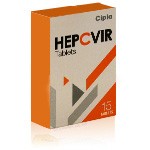Understanding Hep C


Viral hepatitis C is a global health challenge that affects millions of people, often silently and without symptoms for years. It is caused by the hepatitis C virus (HCV), a blood-borne pathogen that primarily targets the liver. Despite advances in diagnosis and treatment, hepatitis C remains one of the leading causes of liver-related morbidity and mortality worldwide. Understanding how it is transmitted, recognized, and managed is crucial in combating its spread and ensuring timely treatment.
What Is Hepatitis C?
Hepatitis C is an infectious disease caused by the hepatitis C virus, which leads to inflammation of the liver. Unlike hepatitis A and B, there is no vaccine for hepatitis C, making prevention and early detection essential. The virus can cause both acute and chronic infections. While some people may clear the virus on their own within a few months of infection, the majority — about 75% to 85% — develop chronic hepatitis C. Over time, chronic infection can progress to serious liver complications, such as cirrhosis, liver failure, or hepatocellular carcinoma (liver cancer).
Hepatitis C is sometimes referred to as a “silent epidemic” because many infected individuals remain unaware of their condition for years. The virus can be present in the body without causing noticeable symptoms until significant liver damage has occurred. Therefore, it is often discovered incidentally during routine blood tests or screening for unrelated medical procedures.
How Is the Hepatitis C Virus Transmitted?
Understanding the transmission routes of HCV is vital to prevent new infections. The primary mode of transmission is through blood-to-blood contact. In the past, many cases of hepatitis C were contracted through blood transfusions or organ transplants. However, rigorous screening of blood products has significantly reduced this risk in developed countries.
Today, the most common route of HCV transmission is through the sharing of needles and other equipment for injecting drugs. This includes syringes, cookers, cotton, and tourniquets. People who inject drugs (PWID) remain the most at-risk population globally. Other less frequent but possible routes of transmission include needlestick injuries in healthcare settings, unregulated tattooing or piercing, and sharing personal items like razors or toothbrushes that may be contaminated with infected blood.
Sexual transmission of hepatitis C is less common but can occur, particularly among men who have sex with men (MSM) and individuals with multiple sexual partners or sexually transmitted infections (STIs). In rare cases, vertical transmission from mother to child during childbirth is possible. However, breastfeeding is not generally considered a risk factor unless there are cracked or bleeding nipples.
Hepatitis C is not spread through casual contact such as hugging, kissing, or sharing food and drinks. Education and harm reduction strategies play a crucial role in reducing transmission, especially among high-risk populations.
What Are the Symptoms of the Hepatitis C Virus?
Hepatitis C often progresses silently, especially in its early stages. Many individuals with acute hepatitis C infection experience no symptoms. If symptoms do occur, they typically appear within two to twelve weeks after exposure and may include fatigue, fever, nausea, vomiting, abdominal pain, joint pain, and jaundice (a yellowing of the skin and eyes).
Chronic hepatitis C may remain asymptomatic for years, but the virus continues to cause liver inflammation and damage during this time. When symptoms of chronic infection develop, they are often non-specific and may include persistent fatigue, depression, loss of appetite, weight loss, and discomfort in the upper right abdomen.
In advanced stages, when the liver becomes severely scarred (cirrhosis), more serious symptoms can appear, such as fluid accumulation in the abdomen (ascites), bleeding from enlarged veins in the esophagus, confusion or drowsiness due to toxins affecting the brain (hepatic encephalopathy), and yellowing of the eyes and skin. At this point, the disease may become life-threatening.
Given the nonspecific nature of early symptoms—or their complete absence—screening is the most reliable way to detect hepatitis C. Risk-based screening (such as for people with a history of injecting drugs or prior transfusions) and universal screening for adults over a certain age are recommended in many countries.
Key Facts About Hepatitis C
One of the defining features of hepatitis C is its potential to cause chronic infection, which distinguishes it from other types of viral hepatitis. It is estimated that over 50 million people worldwide are living with chronic hepatitis C, and approximately 1 million new infections occur each year. The World Health Organization (WHO) has set an ambitious target to eliminate hepatitis C as a public health threat by 2030, aiming to reduce new infections by 90% and mortality by 65%.
Another important fact is that hepatitis C is curable. With the advent of direct-acting antiviral (DAA) medications, treatment success rates have improved dramatically. Most people treated with modern DAAs can achieve a sustained virologic response (SVR), meaning the virus is undetectable in the blood 12 weeks after completing therapy — essentially, a cure.
However, access to diagnosis and treatment remains uneven, especially in low- and middle-income countries. Stigma, lack of awareness, and high treatment costs have hindered efforts to reach all affected individuals. Global health organizations emphasize the need for expanded screening, simplified treatment protocols, and reduced medication costs to address these challenges effectively.
What Do You Need to Know About Hepatitis C?
To protect yourself and others, it is important to be informed about hepatitis C. First and foremost, if you are at risk—or have ever been at risk—for HCV exposure, consider getting tested. Testing typically begins with an HCV antibody test, followed by an HCV RNA test to confirm active infection.
If you are diagnosed with hepatitis C, prompt consultation with a healthcare provider is crucial. Early treatment can prevent the progression to liver disease and reduce the risk of transmitting the virus to others. It is also important to avoid alcohol and maintain a liver-healthy lifestyle, as alcohol use significantly accelerates liver damage in people with hepatitis C.
Although a previous infection with hepatitis C does not provide immunity, successful treatment offers long-term protection by eliminating the virus. Reinfection is possible, particularly for individuals who continue to engage in high-risk behaviors. Therefore, prevention strategies must continue even after successful treatment.
Vaccination against hepatitis A and B is recommended for people with hepatitis C to prevent further liver complications, as co-infection can worsen disease outcomes. Liver function should be monitored regularly to assess damage and determine if additional interventions are needed.
The Role of Hepcvir in the Treatment of Hepatitis C
Hepcvir is a brand name for sofosbuvir, a direct-acting antiviral (DAA) that revolutionized hepatitis C treatment. Sofosbuvir is a nucleotide analog polymerase inhibitor that directly targets the replication process of the hepatitis C virus. When combined with other antiviral agents such as ledipasvir, daclatasvir, or velpatasvir, sofosbuvir achieves cure rates exceeding 95% in most patients.
Hepcvir-based regimens are effective across multiple genotypes of HCV, making treatment more accessible and streamlined. The typical course lasts 12 weeks, though it may be shortened or extended depending on liver condition and previous treatment history. Unlike older interferon-based therapies, sofosbuvir is well tolerated, with relatively mild side effects including headache, fatigue, and nausea.
One of the major benefits of Hepcvir and similar DAAs is the ability to treat HCV on an outpatient basis without the need for hospitalization. These medications have made it possible to manage hepatitis C more effectively, even in patients with advanced liver disease or co-infections like HIV.
Nevertheless, cost remains a significant barrier in some regions, although generic versions of Hepcvir are now available in many countries, improving affordability. The broader use of Hepcvir is a cornerstone of global efforts to eliminate hepatitis C, particularly in resource-limited settings where treatment scale-up is urgently needed.
Conclusion
Viral hepatitis C is a potentially life-threatening but curable disease that demands global attention. Understanding how the virus is transmitted, recognizing its often-subtle symptoms, and ensuring early screening and treatment can prevent serious liver complications. Hepcvir and other DAA therapies have transformed hepatitis C from a chronic, progressive disease into a curable infection for most patients.
Ongoing education, improved access to diagnostics, affordable medications, and destigmatization efforts are key to controlling the spread of hepatitis C and achieving global elimination goals. With the right strategies and commitment, the burden of this silent virus can be significantly reduced in the coming years.
Medically Reviewed by Dr. Rabeea Aboufakher, MD
(Updated at Jun 28 / 2025)

